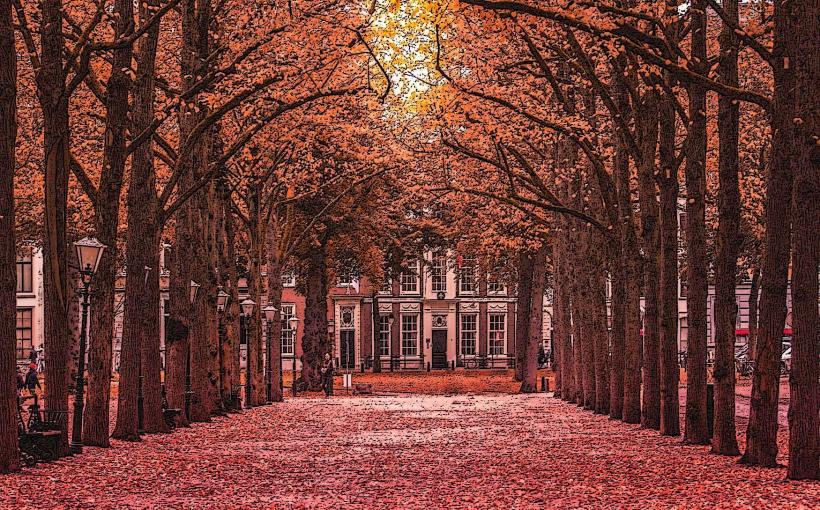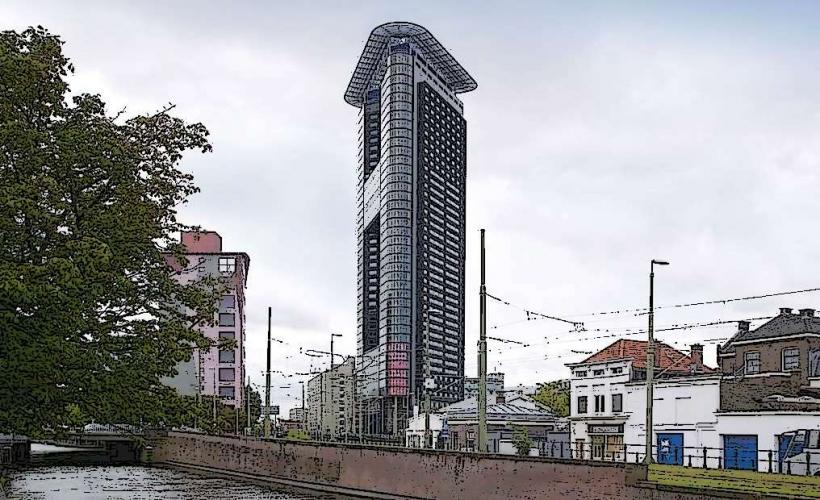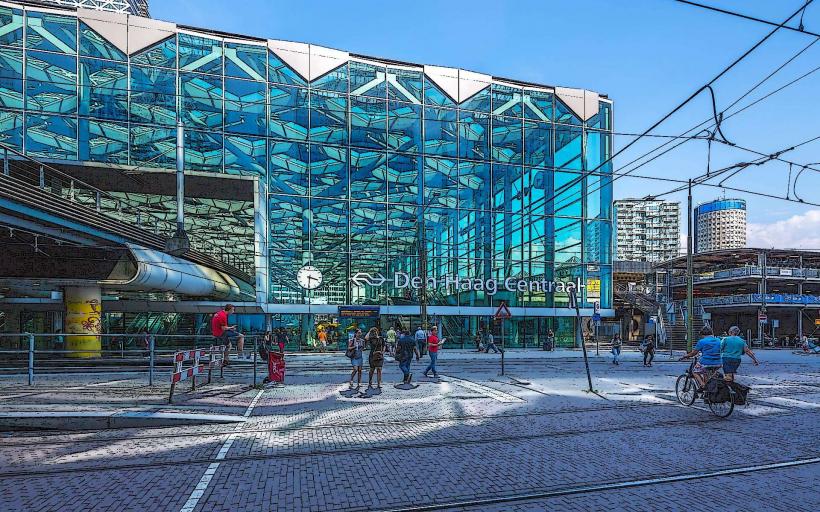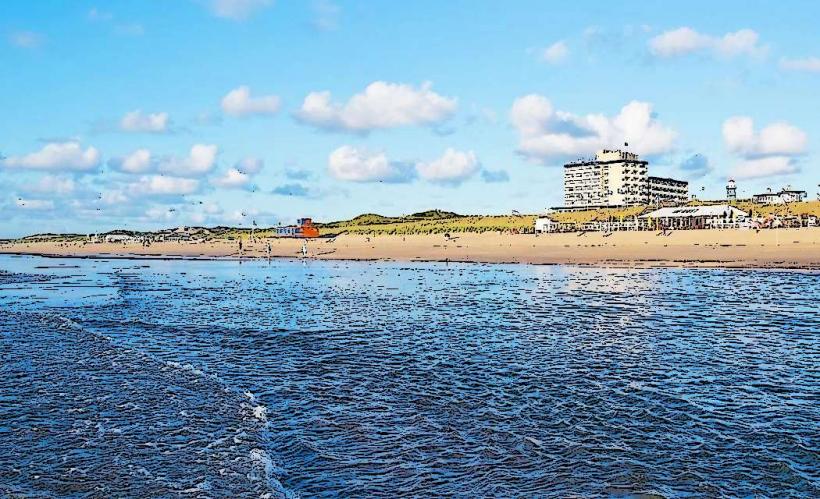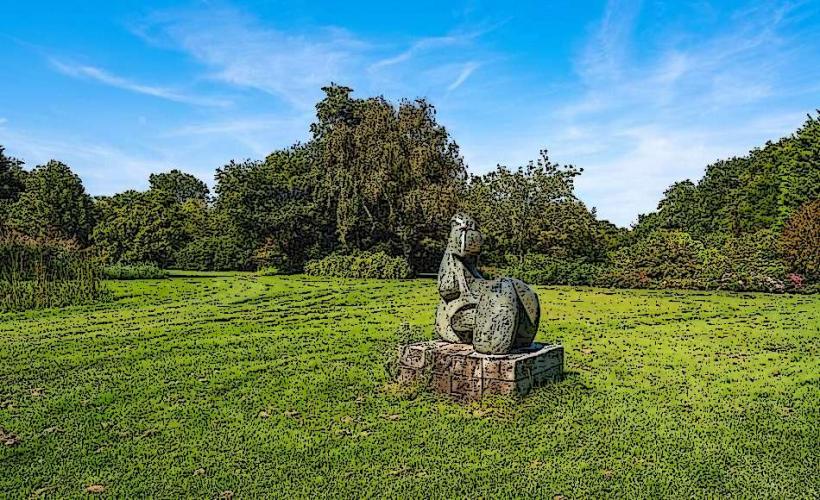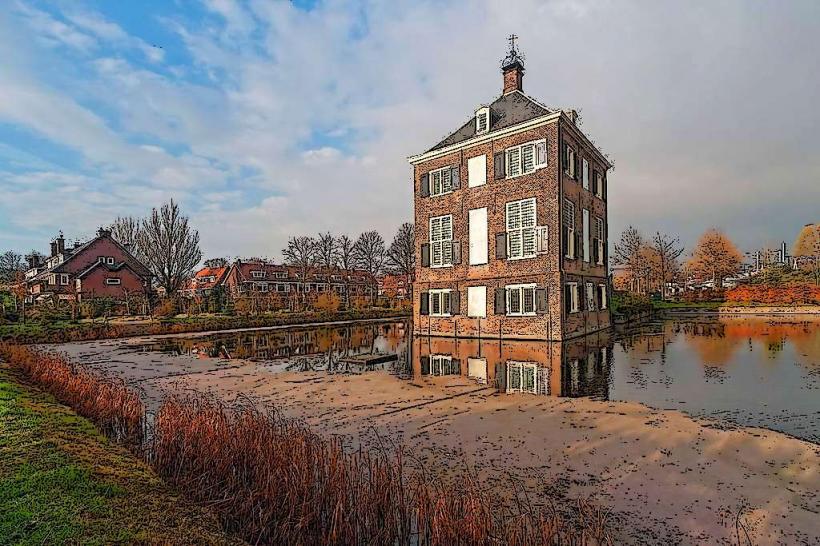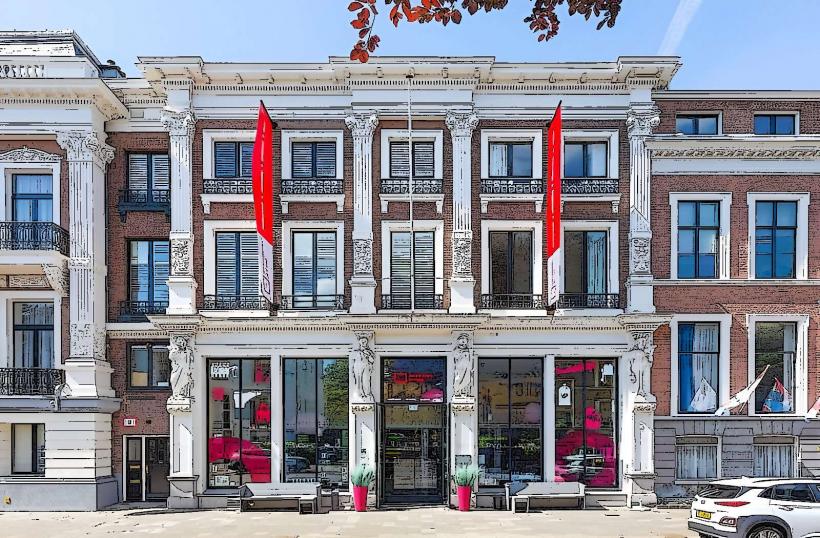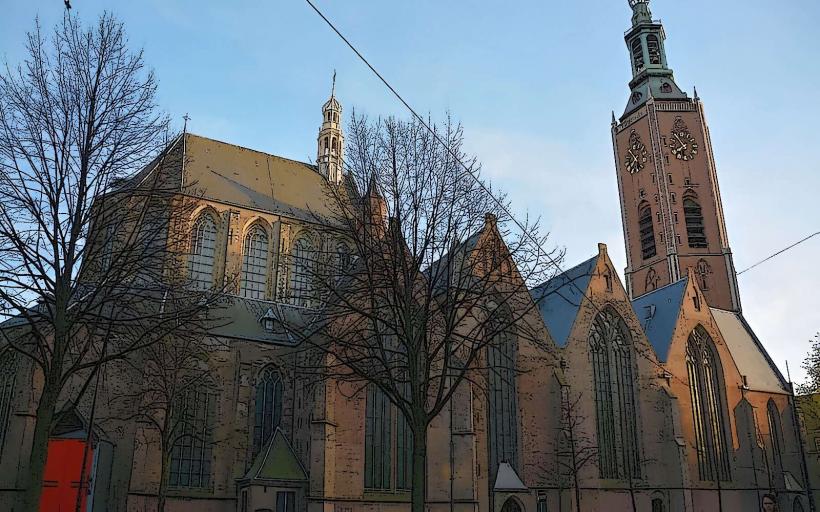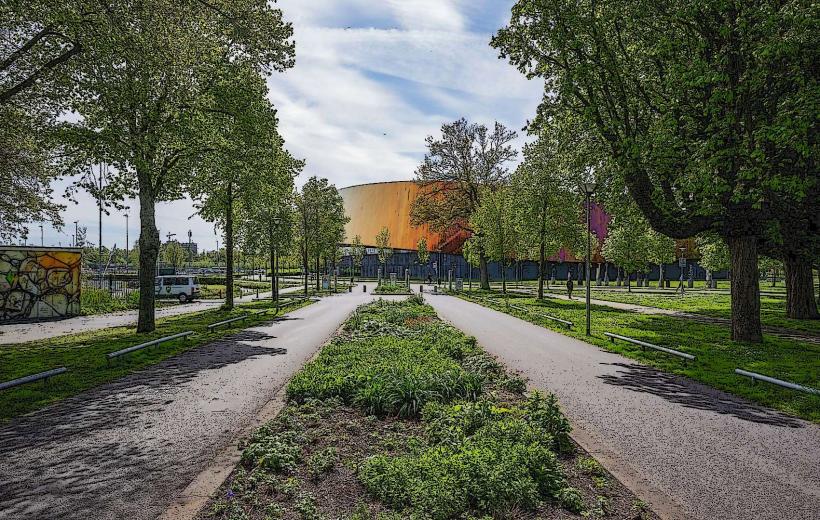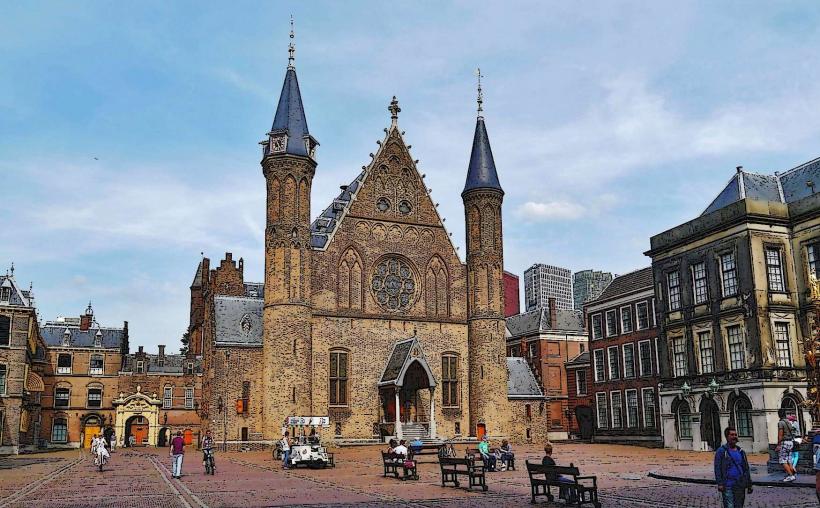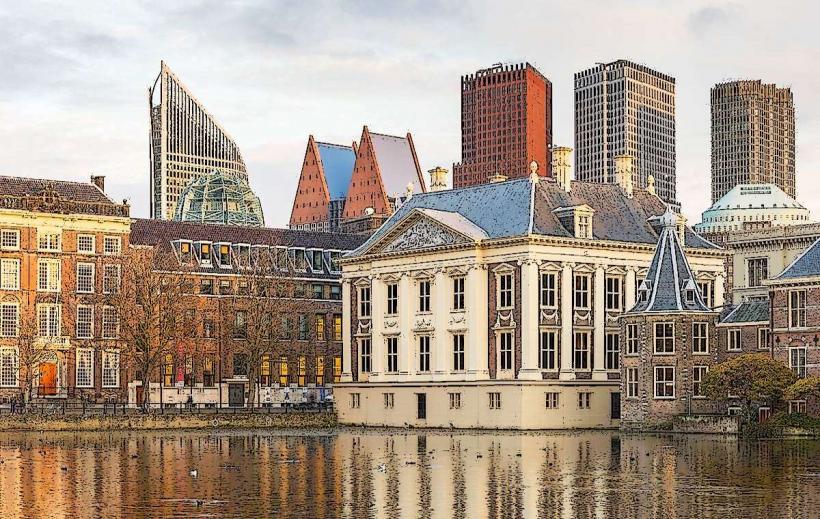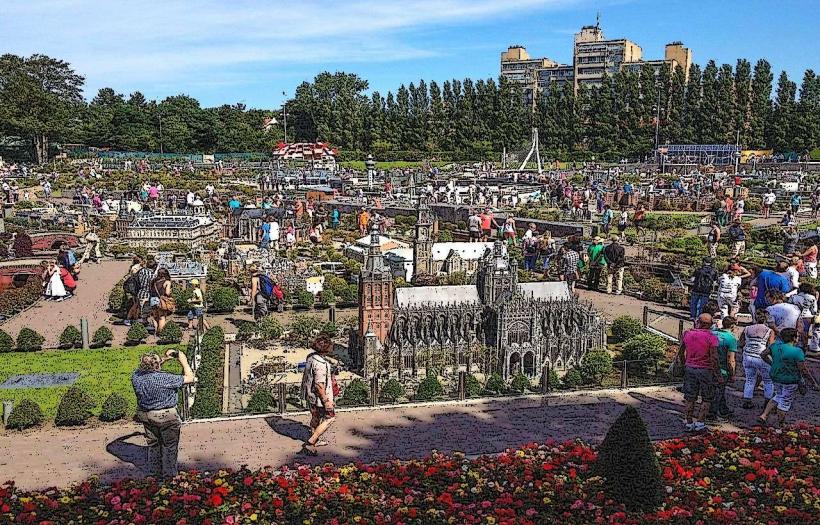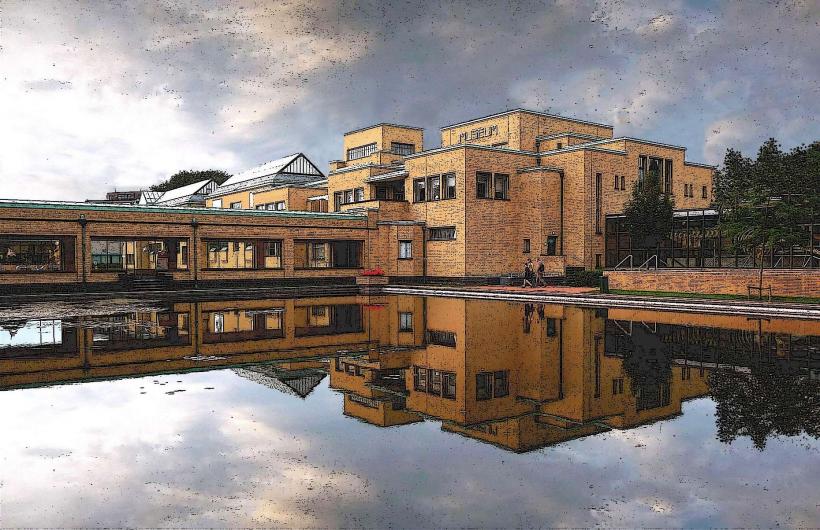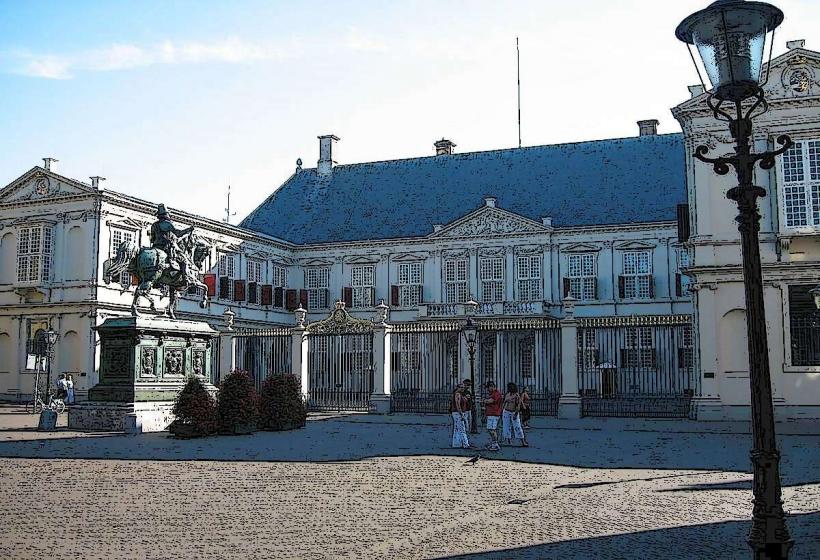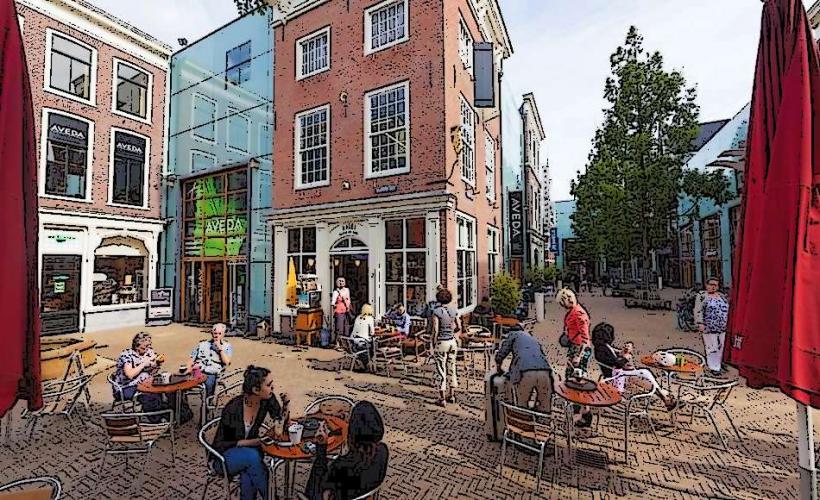Information
Landmark: Peace PalaceCity: The Hague
Country: Netherlands
Continent: Europe
The Peace Palace (Vredespaleis) in The Hague is one of the most important landmarks for international diplomacy and justice. It is the seat of several key institutions related to global peace and law, and its stunning architecture and symbolic importance make it a key location in The Hague, often referred to as the "International City of Peace and Justice."
1. History and Origins
- Establishment: The idea for the Peace Palace was first proposed by Andrew Carnegie, a Scottish-American philanthropist and industrialist, in 1903. Carnegie, a strong supporter of peace and international law, donated a significant sum (about $1.5 million at the time) to fund the construction of a building that would house international courts and organizations dedicated to peacekeeping and dispute resolution.
- Opening: The Peace Palace was officially opened on August 28, 1913. It was designed to serve as the headquarters for the Permanent Court of Arbitration (PCA), which had been established in 1899. The building was also intended to accommodate other international organizations that worked towards promoting peace, such as the International Court of Justice (ICJ), established later.
- Symbolism: The Peace Palace is a symbol of the efforts to maintain peace through the rule of law and diplomatic resolution of conflicts. Its creation marked a significant step in the early 20th century’s efforts to promote international cooperation and the peaceful settlement of disputes.
2. Architectural Features
- Design: The design of the Peace Palace is a blend of neo-Renaissance and neo-Gothic styles, reflecting both tradition and grandeur. The building was designed by the architect Louis M. Cordonnier from Belgium, and it features intricate stonework, large windows, and tall spires. Its imposing façade is intended to convey the weight and importance of international diplomacy and justice.
- Materials: The Peace Palace is constructed using a variety of materials from different countries, which highlights its international character. The building’s facade is made of red sandstone, and the interior features wood and marble from multiple countries, representing global cooperation. Dutch and French architectural influences are evident, as well as decorative elements from various European traditions.
- Interior: Inside, the Peace Palace features a series of grand rooms, including the Great Hall of Justice, where the International Court of Justice meets. The hall is beautifully adorned with murals and sculptures, depicting themes of peace, justice, and international law. The Peace Palace is also home to a library, which holds an extensive collection of legal books and documents, further contributing to its status as a center of international law and diplomacy.
3. Key Institutions in the Peace Palace
- International Court of Justice (ICJ): The ICJ, also known as the World Court, is the principal judicial body of the United Nations and the highest court for international law. The court resolves legal disputes between states and provides advisory opinions on international legal questions. The ICJ has been based in the Peace Palace since its establishment in 1945.
- Permanent Court of Arbitration (PCA): The PCA is an international organization that provides services for the arbitration of disputes between states, organizations, and individuals. It was the first permanent court to operate from the Peace Palace and continues to be housed there.
- Hague Academy of International Law: Another key institution located in the Peace Palace is the Hague Academy of International Law, which offers advanced programs in international law. This academic institution plays a key role in the education of future diplomats, judges, and legal experts in the field of international law.
- Peace Palace Library: The Peace Palace Library is one of the world’s leading libraries specializing in international law. It holds a vast collection of books, journals, and legal texts related to the field of international justice, making it an essential resource for scholars and practitioners in international law.
4. Symbolic Importance
- International Peace: The Peace Palace is a powerful symbol of the ongoing efforts to achieve global peace through dialogue, diplomacy, and the rule of law. Its location in The Hague, a city already known for its historical role in hosting international courts, further cements its role as a global center for the peaceful resolution of disputes.
- Diplomatic Hub: The Peace Palace serves as a meeting point for diplomats, judges, and legal scholars from around the world, reinforcing The Hague's status as the hub of international legal activity. As the headquarters of important international legal bodies, it is a place where important decisions about peace, human rights, and international law are made.
- Cultural Symbol: The Peace Palace is also a cultural symbol, representing the cooperation and unity of the international community. It is a reminder of the importance of multilateralism, rule of law, and respect for international norms in maintaining peace and security in the modern world.
5. Visitor Experience
- Public Tours: The Peace Palace is open to the public through guided tours, allowing visitors to explore the building and learn about its history and the work done inside. The tours take visitors through the Great Hall of Justice, the library, and other parts of the building, with explanations of the functions of the organizations housed there.
- Exhibitions: In addition to the tours, the Peace Palace often hosts temporary exhibitions related to international law, diplomacy, and peacekeeping efforts. These exhibitions aim to educate visitors about the importance of these issues in global politics and history.
- Visitor Center: The Peace Palace Visitor Center provides additional resources, including exhibits and films about the Peace Palace’s history, the organizations based there, and the broader efforts to promote peace and justice worldwide. The visitor center is an important part of the museum and educational experience.
- Special Events: The Peace Palace is also the site of various special events, such as conferences, lectures, and symposia on topics related to international law and peace. It hosts numerous diplomatic gatherings and academic programs that contribute to the ongoing dialogue about global governance and conflict resolution.
6. Conclusion
The Peace Palace stands as one of the most iconic and influential buildings in The Hague, representing the ongoing efforts of the international community to work toward a more peaceful world governed by law. It houses institutions that are crucial to the administration of international justice, and it serves as a beacon for those who strive for a world where conflicts are resolved through diplomatic and legal means rather than war. As both a place of great historical significance and a symbol of hope for a peaceful future, the Peace Palace remains an essential destination for anyone interested in the pursuit of peace and global cooperation.

